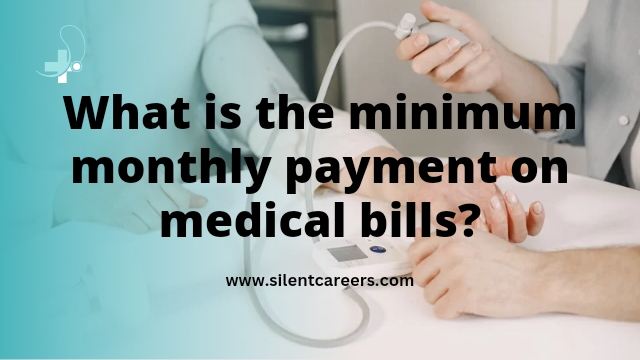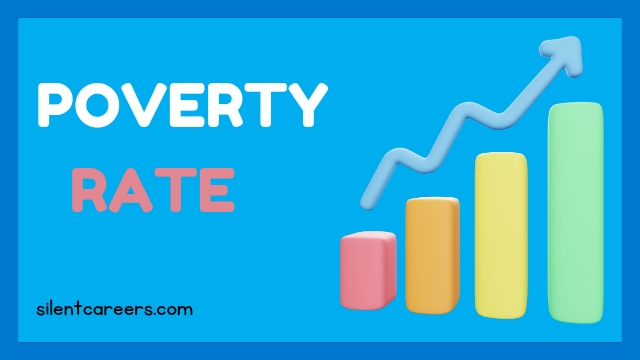
What is the minimum monthly payment on medical bills: The minimum monthly payment on medical bills varies depending on the total amount owed, the healthcare provider’s policies, and any payment plans offered. Generally, it is determined based on what you can afford, with a typical range from $25 to $100 per month.

Review Medical Bills for Errors Before Paying
Reviewing medical bills for errors before paying is essential. Here’s why and how you can do it:
Why Review Medical Bills?
- Prevent Overcharges: Mistakes in billing codes or duplicate charges can lead to paying more than you owe.
- Identify Insurance Errors: Ensure your insurance has correctly processed claims and applied appropriate discounts.
- Avoid Fraud: Detect fraudulent charges or services you didn’t receive.
- Manage Expenses: Understanding your bill helps you manage medical expenses better.
How to Review Medical Bills for Errors:
- Request an Itemized Bill: Obtain a detailed bill that lists each service and charge.
- Compare with Explanation of Benefits (EOB): Cross-check your bill with the EOB from your insurance company to verify covered services and out-of-pocket costs.
- Check Billing Codes: Ensure that the billing codes match the treatments and services you received.
- Verify Dates and Services: Confirm that the dates of service and listed treatments are accurate.
- Look for Duplicate Charges: Watch for any repeated charges for the same service.
- Contact Billing Office: If you spot any discrepancies, contact the healthcare provider’s billing office for clarification.
- Negotiate or Dispute: If there are errors, negotiate with the provider or formally dispute the charges.
Reviewing your medical bills before paying can prevent overcharges, ensure insurance accuracy, avoid fraud, and help you manage expenses. Always request an itemized bill, compare it with your insurance EOB, check billing codes, verify services, look for duplicates, and contact the billing office for any discrepancies.
Drug Dosage vs. Amount Billed
When reviewing medical bills, compare the drug dosage prescribed with the amount billed to ensure accuracy:
- Check Dosage: Verify the dosage and quantity of the medication prescribed by your doctor.
- Compare with Bill: Ensure the billed amount matches the prescribed dosage and quantity.
- Identify Discrepancies: Look for overcharges or billing for incorrect dosages.
- Contact Provider: If discrepancies are found, contact the healthcare provider or pharmacy for clarification and correction.
4 Tips To Paying Big Medical Bills With Minimum Monthly Payments
Paying big medical bills with minimum monthly payments can be managed effectively with these tips:
- Negotiate a Payment Plan: Contact the billing department to set up a manageable payment plan with low monthly installments, ensuring it fits your budget.
- Apply for Financial Assistance: Check if the healthcare provider offers financial assistance programs or discounts based on income and financial hardship.
- Use a Medical Credit Card: Consider medical credit cards designed for healthcare expenses, which may offer promotional interest-free periods if paid within a certain timeframe.
- Budget and Prioritize: Adjust your budget to prioritize medical bills, cutting unnecessary expenses to ensure consistent, on-time payments.
When does medical debt go to collections?
Medical debt typically goes to collections after a period of non-payment, usually ranging from 90 to 180 days, depending on the healthcare provider’s policies. Here’s how it works:
1. Initial Billing
- Billing Cycle: After receiving medical services, the provider will send you a bill. This bill is usually due within 30 to 60 days.
2. Reminder Notices
- Follow-Up: If the bill is not paid by the due date, the provider will typically send reminder notices and possibly contact you by phone to request payment.
3. Grace Period
- Extended Time: Providers often allow an additional 60 to 120 days for payment after the initial due date before taking further action.
4. Collections Referral
- Collection Agency: If the bill remains unpaid after this grace period (usually 90 to 180 days from the initial billing date), the provider may refer the debt to a collection agency.
5. Impact on Credit
- Credit Reporting: Once the debt is sent to collections, the collection agency may report it to the credit bureaus, negatively impacting your credit score. However, under the National Consumer Assistance Plan, medical debts cannot be reported to credit bureaus until they are at least 180 days past due.
6. Communication
- Notice of Collections: You will receive a notice from the collection agency regarding the debt, giving you an opportunity to resolve it before it impacts your credit report.
Medical debt typically goes to collections after 90 to 180 days of non-payment. Providers send initial bills and reminders, followed by a grace period. If unpaid, the debt is referred to a collection agency and may be reported to credit bureaus after 180 days, impacting your credit score.
Read more: How to Check Your Credit Score with an ITIN number
How to handle medical debt before it goes to collections
Handling medical debt before it goes to collections involves proactive steps to manage and resolve the debt. Here are some strategies:
1. Review Your Bills
- Check for Errors: Ensure all charges are accurate and match the services you received.
- Verify Insurance: Confirm that your insurance has correctly processed and applied payments to your bill.
2. Communicate with Providers
- Contact Billing Department: Speak with the healthcare provider’s billing department to discuss your situation and explore payment options.
- Request an Itemized Bill: Get a detailed bill to understand all charges clearly.
3. Negotiate Payment Terms
- Payment Plan: Request a payment plan that spreads the debt over several months with manageable monthly payments.
- Discounts: Ask for any available discounts or financial assistance programs, especially if you’re experiencing financial hardship.
4. Apply for Financial Assistance
- Hospital Programs: Many hospitals offer financial assistance or charity care programs for those who cannot afford to pay their medical bills.
- Nonprofit Organizations: Look for nonprofit organizations that provide help with medical bills.
5. Use Medical Credit Cards
- Interest-Free Periods: Consider medical credit cards that offer interest-free financing for a specified period if paid off within that timeframe.
6. Explore Personal Loans
- Lower Interest Rates: Personal loans may offer lower interest rates than letting the debt go to collections and can help you consolidate and manage payments.
7. Budget and Prioritize
- Adjust Spending: Review and adjust your budget to prioritize paying off medical debt.
- Emergency Fund: Use your emergency savings if necessary, but ensure you still have funds for other emergencies.
8. Seek Professional Advice
- Credit Counselor: Consult a credit counselor or financial advisor for personalized advice and strategies to manage your debt.
- Legal Assistance: If the debt is substantial, consider consulting a lawyer specializing in medical debt.
To handle medical debt before it goes to collections, review your bills for accuracy, communicate with providers to negotiate payment plans and seek discounts, apply for financial assistance, consider medical credit cards or personal loans, adjust your budget to prioritize payments, and seek professional advice if needed.
Know your legal rights as a patient
As a patient, knowing your legal rights ensures you receive fair and proper medical care. Here are key rights you should be aware of:
1. Right to Informed Consent
- Explanation of Treatments: You have the right to be informed about the benefits, risks, and alternatives of any treatment or procedure before giving consent.
- Questions and Clarifications: You can ask questions and receive clear answers from your healthcare provider.
2. Right to Privacy and Confidentiality
- HIPAA Protections: Under the Health Insurance Portability and Accountability Act (HIPAA), your medical records and personal information must be kept confidential and can only be shared with your consent or as required by law.
- Access to Records: You have the right to access your medical records and request corrections if there are errors.
3. Right to Emergency Care
- EMTALA: Under the Emergency Medical Treatment and Labor Act (EMTALA), you have the right to receive emergency medical treatment regardless of your ability to pay.
4. Right to Respectful Care
- Non-Discrimination: You have the right to receive care without discrimination based on race, color, religion, gender, sexual orientation, or disability.
- Dignity and Respect: You should be treated with respect and dignity by all healthcare providers.
5. Right to Make Decisions About Your Care
- Autonomy: You have the right to make decisions about your healthcare, including the right to refuse treatment.
- Advance Directives: You can create advance directives, such as living wills or durable power of attorney for healthcare, to outline your preferences for medical care if you become unable to make decisions.
6. Right to Seek Second Opinions
- Consult Other Doctors: You have the right to seek second opinions or consult other doctors about your diagnosis and treatment options.
7. Right to File Complaints
- Grievances: If you believe your rights have been violated or you received substandard care, you have the right to file complaints with the healthcare provider, hospital administration, or state health department.
- Legal Action: You can take legal action if your rights are not respected or if you suffer harm due to medical negligence.
8. Right to Transparency in Billing
- Clear Billing Information: You have the right to receive clear and detailed billing information, including explanations of charges and any financial assistance options.
9. Right to Participate in Care Decisions
- Involvement in Planning: You have the right to be involved in all aspects of your care planning and decision-making processes.
10. Right to Pain Management
- Pain Relief: You have the right to appropriate assessment and management of pain by your healthcare providers.
Knowing your legal rights as a patient includes the right to informed consent, privacy and confidentiality, emergency care, respectful treatment, decision-making, second opinions, filing complaints, transparency in billing, participation in care decisions, and pain management. Familiarizing yourself with these rights empowers you to advocate for yourself and ensures you receive fair and proper medical care.
Who can help you navigate medical debt?
Navigating medical debt can be challenging, but several resources and professionals can assist you:
- Medical Billing Advocates: These professionals specialize in reviewing medical bills for errors, negotiating with healthcare providers, and setting up payment plans.
- Credit Counselors: Nonprofit credit counseling agencies offer advice on managing debt, creating budgets, and negotiating with creditors.
- Financial Counselors at Hospitals: Many hospitals have financial assistance programs and staff who can help you understand your bills and apply for aid.
- Nonprofit Organizations: Groups like the Patient Advocate Foundation provide free assistance with medical debt and insurance issues.
- Legal Aid Services: If you’re facing severe financial hardship, legal aid organizations can offer free or low-cost legal advice and representation.
- Social Workers: Healthcare social workers can help you find financial resources and navigate the healthcare system.
- Insurance Representatives: Contact your insurance company to understand your coverage, dispute denied claims, and get help with billing issues.
By utilizing these resources, you can better manage your medical debt and find solutions that work for your financial situation.
Be careful using these payment methods
Be careful using these payment methods without fully understanding the terms and potential risks:
- Credit Cards: Using credit cards to pay medical bills can lead to high-interest debt if not paid off promptly. Ensure you can pay the balance in full to avoid interest charges.
- Medical Credit Cards: While they may offer interest-free periods, failing to pay within the promotional period can result in high-interest rates.
- Personal Loans: Taking out personal loans can spread payments over time, but consider the interest rates and fees that may apply.
- Home Equity Loans: These can provide low-interest funds, but you risk losing your home if you default on payments.
- 401(k) Loans: Borrowing from your retirement savings can jeopardize your future financial security and incur penalties if not repaid.
Before using any of these payment methods, assess your financial situation and consider consulting a financial advisor.
What to do if your medical debt is in collections
If your medical debt is in collections, follow these steps:
Verify the Debt
- Request a debt validation letter from the collection agency. Ensure the amount and creditor details are accurate.
Know Your Rights
- Familiarize yourself with the Fair Debt Collection Practices Act (FDCPA) to understand your protections and rights.
Negotiate with the Collector
- Try to negotiate a payment plan or settle the debt for a reduced amount. Get any agreements in writing.
Seek Financial Assistance
- Explore financial aid programs or consult a credit counselor for help with managing the debt.
Review Your Credit Report
- Check your credit report to ensure the debt is reported accurately. Dispute any errors if necessary.
Consider Your Options
- Explore options like debt settlement or bankruptcy if you cannot manage the debt. Consult a professional for advice.
Seek Legal Advice
- If you’re facing harassment or rights violations, consult a lawyer specializing in consumer law or debt collection.
Maintain Communication
- Keep in touch with the collection agency and respond to their correspondence to avoid further complications.
How does medical debt impact your credit score?
Medical debt can impact your credit score in the following ways:
- Negative Impact: Unpaid medical bills can be reported to credit bureaus and may negatively affect your credit score.
- Collections: Once medical debt is sent to collections, it can significantly lower your credit score. Collection accounts are typically reported to the credit bureaus.
- Delay in Reporting: Under the National Consumer Assistance Plan, medical debts are not reported to credit bureaus until they are 180 days past due. This delay allows time for insurance claims to be processed and disputes to be resolved.
- Credit Score Recovery: Paying off or settling medical debt can improve your credit score over time. Once the debt is resolved, the credit report should reflect this, although the impact on your score may take some time.
- Credit Score Calculation: Medical debt is treated similarly to other types of debt in credit score calculations, impacting factors like payment history and credit utilization.
Bankruptcy as a last resort
Bankruptcy can be a viable option for dealing with overwhelming debt, including medical debt, but it should be considered a last resort due to its significant long-term impact. Here’s what you need to know:
1. Types of Bankruptcy
- Chapter 7 Bankruptcy: This involves liquidating non-exempt assets to pay off creditors. It can discharge most unsecured debts, including medical bills, but may require selling some assets.
- Chapter 13 Bankruptcy: This involves creating a repayment plan to pay back all or part of your debt over three to five years. It allows you to keep your assets but requires regular payments based on your income.
2. Eligibility and Process
- Eligibility: To qualify for Chapter 7, you must pass a means test that compares your income to the median income in your state. Chapter 13 requires a regular income to fund the repayment plan.
- Filing: Bankruptcy involves filing a petition in federal court, listing all debts, assets, income, and expenses. You’ll also need to attend credit counseling and meet with a bankruptcy trustee.
3. Impact on Credit
- Credit Report: Bankruptcy will remain on your credit report for seven to ten years, significantly affecting your credit score and ability to obtain new credit.
- Future Borrowing: It can make it more difficult to obtain loans or credit in the future, and you may face higher interest rates.
4. Consider Alternatives
- Negotiate with Creditors: Before considering bankruptcy, explore negotiating with creditors, settling debts, or consolidating loans.
- Seek Professional Advice: Consult a bankruptcy attorney or financial advisor to evaluate your situation and explore all options.
5. Emotional and Financial Considerations
- Emotional Impact: Bankruptcy can be emotionally challenging, as it involves admitting financial distress and making significant lifestyle changes.
- Financial Recovery: While bankruptcy can provide relief from debt, rebuilding your credit and financial health will take time and effort.
Bankruptcy should be considered as a last resort due to its long-term effects on your credit and financial situation. It involves different types (Chapter 7 and Chapter 13), eligibility requirements, and a significant impact on your credit report. Before filing, explore other options like negotiating with creditors and seek professional advice to ensure you make the best decision for your circumstances.
Inpatient vs. Outpatient Setting
Understanding the difference between inpatient and outpatient settings is essential for managing healthcare costs and treatment plans:
Inpatient Setting
- Definition: Involves being admitted to a hospital or medical facility for an overnight stay or longer. This setting is used for more complex or severe medical conditions requiring intensive monitoring and care.
- Characteristics:
- Extended Stay: Requires at least one overnight stay in the hospital.
- 24/7 Monitoring: Includes continuous observation and access to medical staff.
- Complex Care: Often used for major surgeries, severe illnesses, or treatments requiring constant care.
- Examples: Major surgeries (e.g., open-heart surgery), severe infections, childbirth, or treatment for serious health conditions.
- Costs: Generally higher due to the comprehensive care provided, including room, board, and around-the-clock medical attention.
Outpatient Setting
- Definition: Involves receiving medical treatment or procedures without being admitted to a hospital. Patients go home the same day after the procedure or visit.
- Characteristics:
- Same-Day Care: Includes treatments or procedures that do not require overnight hospitalization.
- Scheduled Visits: Patients visit the facility for scheduled appointments and return home on the same day.
- Less Intensive: Typically used for less severe conditions or follow-up care that does not require extended observation.
- Examples: Routine check-ups, minor surgeries (e.g., hernia repair), diagnostic tests (e.g., MRI, blood tests), or physical therapy.
- Costs: Generally lower than inpatient care as it excludes room and board expenses.
Summary
- Inpatient Setting: Requires hospitalization with 24/7 care for more severe conditions or complex procedures, resulting in higher costs.
- Outpatient Setting: Involves same-day treatments without hospitalization, typically for less severe conditions, with lower costs.
Understanding these settings helps you make informed decisions about your care and manage healthcare expenses effectively.








